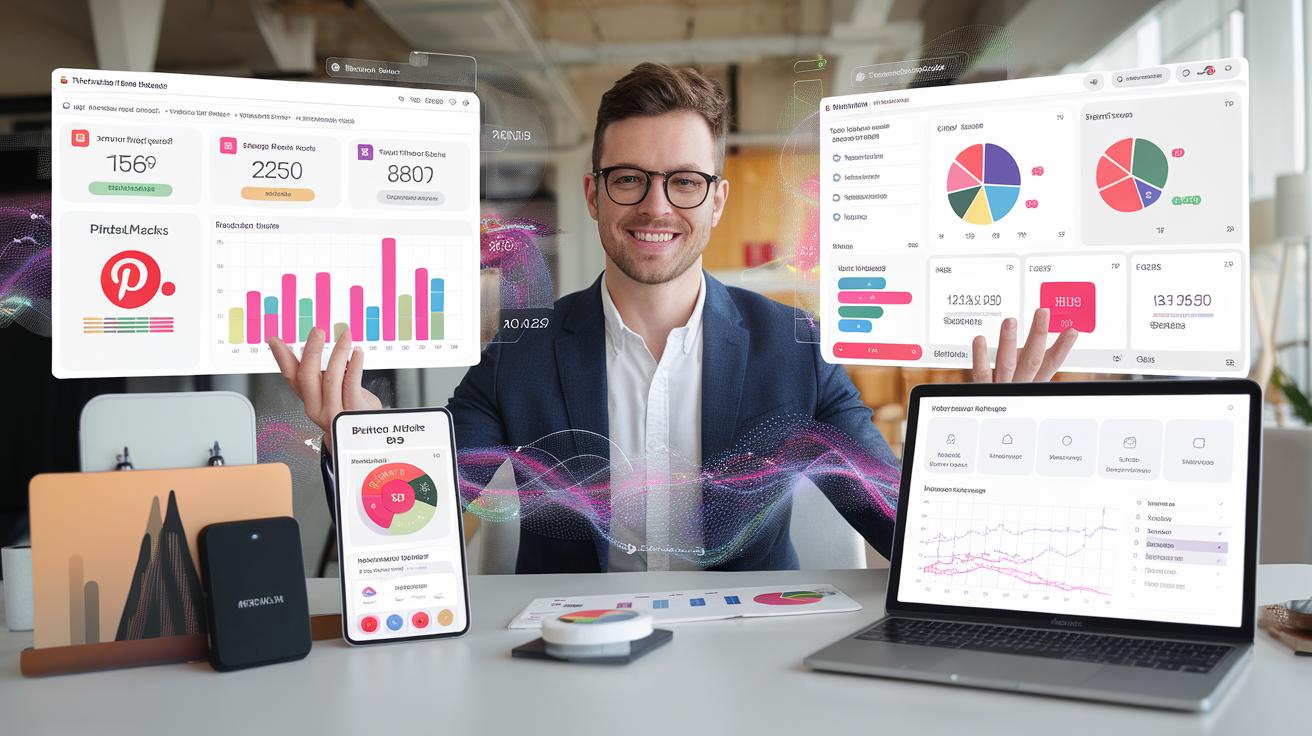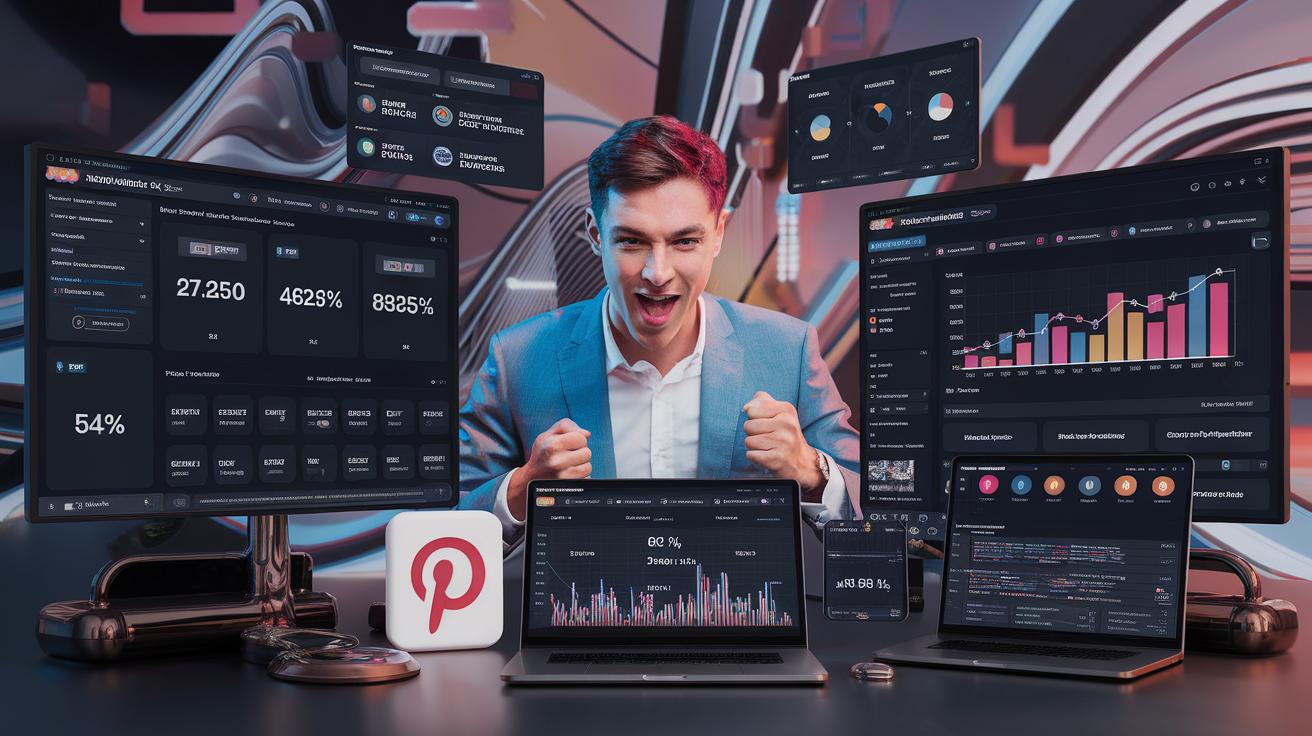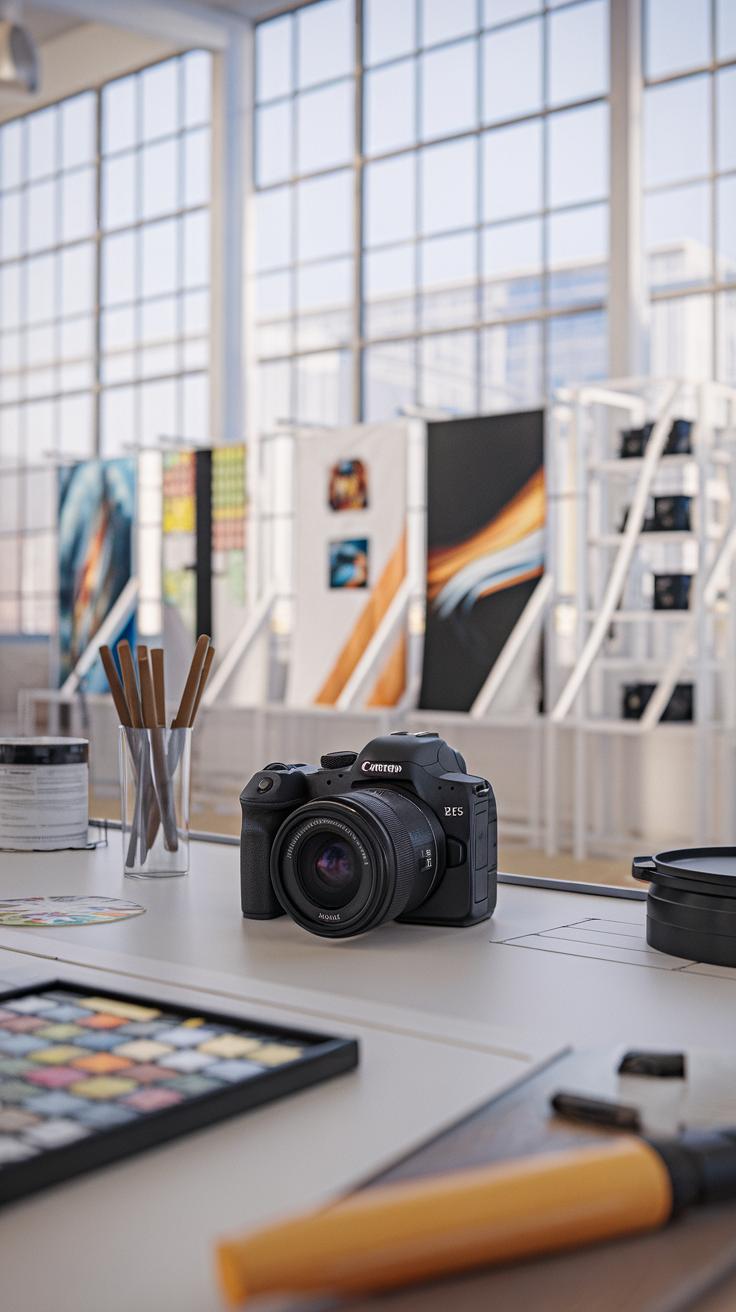Introduction
Visual content remains as the king, and Pinterest has emerged as a powerhouse platform for discovery and inspiration. Understanding how to effectively utilize pin design can make a substantial difference in driving traffic and engagement on Pinterest. This article delves into the nuances of pin design, offering practical tips that can help enhance your marketing strategy. By focusing on aesthetics and functionality, marketers can create pins that not only attract clicks but also foster deeper engagement.
As the competition on Pinterest intensifies, honing your pin design becomes crucial for standing out in users’ feeds. This article covers essential aspects of pin design, from choosing the right color schemes to integrating strong visuals and catchy text overlays. By mastering these elements, brands can cultivate a unique visual identity that resonates with their target audience while effectively promoting their products or services. Let’s explore these tips in detail to elevate your Pinterest marketing game.
Understanding the Basics of Pin Design Elements of Clarity and Visual Hierarchy
The Importance of Clarity
To capture the attention of users scrolling through an endless feed, pins need to communicate their message clearly and instantaneously. Clarity in design ensures that the viewer can quickly understand what the pin is about without feeling overwhelmed. This involves using concise text and a straightforward layout. It’s vital to keep in mind that most Pinterest users skim through content; therefore, the primary message must stand out immediately. A well-crafted pin should answer the question: “What’s in it for me?” while presenting a visual representation that ties into its content.
Establishing Visual Hierarchy
Visual hierarchy is a powerful design principle that helps guide viewers through the elements of a pin from the most to the least important. Using size, color, and placement strategically can significantly impact how users perceive your content. For example, larger text draws attention first, while images can enhance engagement and evoke emotions. Positioning elements in a way that naturally leads the viewer’s eye can further enhance the storytelling aspect of your pin. A logical flow can be achieved by ensuring that the title or key message is at the top, followed by supporting details or imagery.
Utilizing contrast is another effective method for establishing hierarchy. By contrasting background colors against text, or varying the size of design elements, you can create focal points that capture interest.
Aesthetic Appeal
A pin’s aesthetic should not only appeal to the target audience but also reflect the brand’s identity. An engaging aesthetic can include the right mix of imagery, typography, and layout that aligns with your brand’s voice. Consistency across pins helps in building brand recognition; therefore, it is essential to choose fonts and color palettes that evoke the desired emotional response while remaining cohesive with your other brand materials.
A well-designed pin serves as a visual ambassador for your content. By focusing on clarity, visual hierarchy, and aesthetic appeal, you can create pins that not only grab attention but also resonate deeply with your audience, effectively conveying your message and inviting engagement.
Choosing the Right Color Scheme Elevating Your Pinterest Marketing Approach Through Color Psychology
Understanding Color Psychology
Colors are not merely aesthetic choices; they play a vital role in influencing emotions and behaviors. The psychology of colors has been studied extensively, revealing how different hues evoke various feelings and reactions. For instance, warm colors like red and orange can generate excitement and urgency, while cool tones such as blue and green often elicit calmness and trust. Recognizing the emotional implications of color is essential for brands aiming to connect with their audience effectively.
When creating pins, integrating a thoughtful color scheme can significantly enhance user engagement. Users are likely to interact with Pins that resonate emotionally, which can drive clicks to your content. Therefore, before selecting a color palette, consider the emotional response you want to achieve. For example, if your brand promotes wellness and tranquility, a palette of soft greens and blues would likely be more effective than bold reds and yellows.
Selecting a Color Palette That Aligns with Your Brand Identity
Your color choices should reflect your brand identity consistently across all platforms. Start by analyzing your existing branding elements, such as your logo and website. Identify key colors that are prominently featured and consider how these can be translated into your Pinterest pins. Your color scheme should reinforce your brand message, creating an immediate association in the minds of users.
Here are some effective tips for selecting the right colors:
- Limit the Palette: Stick to three to five primary colors to maintain visual coherence.
- Contrast for Readability: Make sure that the text stands out against the background color, ensuring clarity and readability.
- Test with Your Audience: Conduct A/B testing with different color schemes to determine which resonates most with your target demographic.
- Seasonal Adjustments: Consider adapting your color scheme to align with seasonal trends or holidays, enhancing relevance and engagement.
Incorporating a well-thought-out color scheme into your pin design can revolutionize your Pinterest marketing approach by improving emotional connections and overall engagement. By understanding color psychology and selecting hues that align with your brand identity, you can create pins that not only capture attention but also resonate powerfully with your audience.
Incorporating Strong Visuals for Maximum Impact in Pin Design
The Significance of High-Quality Visuals
Pinterest marketing provides strong visuals and serve as the cornerstone of effective pin design. High-quality images capture attention, evoke emotions, and convey messages that resonate with users. When users scroll through their feeds, it’s the stunning visuals that create an immediate connection; therefore, ensuring that your images are not only captivating but also relevant to your brand is vital. The impact of high-quality visuals extends beyond mere aesthetics; they enhance brand recognition and foster trust among your audience.
Sourcing and Utilizing Resonating Images
Identifying images that align with your target audience’s interests is pivotal. Here are some tips for sourcing and utilizing images that not only attract viewers but also enhance your brand messaging:
- Utilize Stock Photo Resources: Websites like Unsplash, Pexels, and Shutterstock provide a vast reservoir of high-resolution images. Ensure to select images that encapsulate the essence of your content while being authentic and relatable.
- Leverage User-Generated Content: Encourage your audience to share their photos featuring your products or services. This tactic not only provides unique visuals but also builds community engagement and trust.
- Incorporate Brand Colors and Elements: When selecting images, look for those that complement your brand’s color palette or visual style. This congruence creates a cohesive look and helps reinforce your brand identity.
- Visual Storytelling: Choose images that tell a story or evoke emotions that align with your brand’s messaging. A compelling visual narrative can significantly increase engagement and shareability.
- Test and Analyze: Experiment with different styles and types of images while monitoring engagement metrics. This data-driven approach can provide insights into what resonates best with your audience, allowing for continual optimization.
The effort spent curating strong visuals is well worth it. In conjunction with the right color schemes discussed previously, your pin design can truly shine and make a lasting impression. Aligning visuals with content and brand messaging encourages viewers to engage with your pins, driving traffic and building community around your brand.
As you prepare for the next step in pin design, remember that compelling text overlays will further enhance your visuals, creating an even more engaging experience for your audience.
Crafting Compelling Text Overlays Enhancing Pin Design for Maximum Engagement
The Impact of Text Overlays in Pin Design
Pinterest marketing with text overlays serve as a powerful tool for melding imagery with messaging. High-quality visuals are essential, but the right text has the potential to transform an attractive image into an enticing clickable pin. Text overlays can clarify the intent of the pin while also drawing in viewers with intriguing language. They serve a dual purpose: attracting attention and prompting action.
Creating effective text overlays begins with understanding the core message you wish to communicate. For instance, if the pin promotes a blog post about healthy recipes, the overlay might include a catchy title or a brief description that conveys the value of the content. Aim to keep it succinct—this ensures that viewers can quickly absorb the message without being overwhelmed. Generally, overlay text should be limited to a few powerful words or a short phrase that encapsulates the essence of the pin.
Guidelines for Creating Effective Text Overlays
To craft overlays that resonate and drive engagement, consider the following guidelines:
- Choose Contrasting Colors: Ensure that your text color contrasts sharply with the background. This helps the text stand out and remain legible even on mobile devices, where many users will view your content.
- Select Readable Fonts: Opt for fonts that are easy to read at a glance. Sans-serif fonts work well for digital formats, and varying font sizes can help denote importance and hierarchy.
- Invoke Emotion and Urgency: Use powerful words that evoke curiosity or urgency. Phrases like “Don’t Miss Out” or “Easy & Delicious” can spark interest and prompt action.
- Maintain Brand Consistency: Your text style and language should reflect your brand’s voice. This helps in establishing identity and ensures that your pins are recognizable at a glance.
- A/B Test Text Overlays: Experiment with different text variations to determine which resonates best with your audience. Analyzing the performance of different overlays can provide insights into your audience’s preferences.
Incorporating strong and designed text overlays can significantly enhance the effectiveness of your pins. By marrying the visual appeal with compelling messaging, you can create a more engaging and actionable experience for your audience, ultimately driving better results in your Pinterest marketing strategy.
Optimizing Pins for Searchability Enhancing Design and Descriptions for Greater Visibility
Importance of Keywords and SEO in Pin Design
To fully leverage Pinterest’s platform for marketing, optimizing pins for searchability is a vital component. Pinterest operates as a visual search engine, making the integration of strategic keywords essential in both pin designs and accompanying descriptions. The practice of incorporating specific keywords increases the likelihood that your pins will surface during relevant user searches, enhancing your overall visibility.
Identifying high-traffic keywords pertinent to your niche is the first step in this optimization process. Utilize Pinterest’s search bar to discover trending terms; simply start typing in a phrase relevant to your business, and observe the suggested completions. These suggestions reflect what users are actively searching for, thus indicating which keywords should be included in your pin descriptions.
Once you have identified your target keywords, seamlessly integrate them into your pin descriptions in a natural manner. Avoid keyword stuffing, as overly complex or awkwardly phrased descriptions may turn potential viewers away. Instead, strive for a fluid writing style that effectively communicates the value of your content while including essential keywords. This approach not only improves searchability but also enhances user engagement.
Pin design also plays a pivotal role in optimization. Use relevant and appealing visuals that resonate with your target audience while incorporating text overlays that complement your descriptions. When crafting text, consider using keywords directly within your overlay to reinforce your message and encourage interaction. For instance, if your pin is about healthy smoothies, a catchy phrase like “5 Green Smoothie Recipes” not only captures attention but also adds an SEO-friendly keyword, thus enhancing searchability.
Best Practices for Descriptions and Design
To further refine your strategy, adhere to best practices for both pin descriptions and visual design. Aim for clarity and brevity in your descriptions, ideally between 100-200 characters. Ensure your message is visually engaging by utilizing a consistent color palette and typography that aligns with your brand identity.
Utilize the alt text feature effectively. While primarily utilized for accessibility, alt text serves as an additional SEO opportunity, allowing you to describe your image content in a keyword-rich format. By following these optimization strategies, you can significantly elevate the searchability of your pins, leading to improved visibility and engagement on the Pinterest platform.
Testing and Analyzing Pin Performance AB Testing in Pin Design
Understanding A/B Testing for Pin Design
A/B testing stands as a powerful tool to refine pin design and maximize engagement. This method involves creating two variations of a pin—referred to as A and B—and measuring which version garners more interaction from viewers. The essence of A/B testing lies in its structured approach to experimentation; by isolating one element of the design at a time, such as color, text, or imagery, marketers can gain valuable insights into viewer preferences and behaviors.
Analyzing Pin Performance for Future Designs
Monitoring the performance of different pin designs reveals critical data that can inform future strategies. Key metrics such as click-through rates (CTR), save rates, and engagement levels provide quantifiable evidence of which elements resonate with your audience. For instance, if a vibrant color scheme in a pin achieves a higher CTR compared to a muted palette, it suggests that brighter colors may attract more attention for your niche. Similarly, assessing the effectiveness of various call-to-action phrases allows brands to refine their messaging to resonate with followers effectively.
- Focus on a single variable: For optimal results, change only one design element at a time, as this enables clearer insights into what drives performance.
- Utilize Pinterest Analytics: The platform’s analytic tools assist marketers in tracking engagement metrics and understanding audience behavior, helping to inform future pin designs.
- Maintain consistent testing: Regularly update tests with new designs to keep the content fresh and engage your audience continually. This practice fosters a culture of innovation and responsiveness.
Through systematic A/B testing, brands can discover which pin characteristics enhance their visibility and appeal. Each iteration offers a unique opportunity to tailor designs more closely to audience preferences, ultimately boosting engagement rates and driving traffic to your website or offerings. This data-driven approach transforms the creative process from mere speculation to an informed strategy, paving the way for impactful Pinterest marketing efforts that evolve alongside audience expectations.
Trends in Pin Design and Pinterest Marketing Staying Ahead for Maximum Engagement
Emerging Trends Shaping Pin Design
As Pinterest continues to evolve, so do the design trends that dominate its platform. One significant trend is the increase in personalized content. Users are seeking pins that resonate with their unique interests and lifestyles, which demands a deeper understanding of target demographics. Utilizing visually appealing images tailored to specific preferences can enhance engagement rates significantly. Another notable trend is the use of bold typography and striking color palettes. Vibrant colors and large, readable fonts not only grab attention but also convey messages quickly and effectively, which is crucial in the fast-moving world of social media.
Video content is also gaining traction on Pinterest, with pins that incorporate short looping clips typically outperforming static images. Brands can utilize this format to present tutorials, product demos, or behind-the-scenes glimpses, thus creating a dynamic experience for viewers. This shift towards more interactive content requires marketers to adapt their pin strategies, taking into account the need for high-quality video production alongside traditional graphic design elements.
Staying Ahead of Trends for Relevance
To maintain relevance in an ever-changing landscape, marketers must stay informed about emerging trends and adapt their strategies accordingly. This involves continuous monitoring of platform analytics, paying attention to what resonates with audiences over time. Engaging with community discussions, following influential creators, and keeping an eye on trending topics can provide insights into what types of pins are gaining traction. Furthermore, experimenting with new features introduced by Pinterest, such as Idea Pins, can also offer a competitive edge and introduce a fresh perspective on content presentation.
Branding consistency is another critical aspect that should not be overlooked. While it’s vital to embrace new trends, maintaining a cohesive brand identity across all pins ensures that viewers can recognize a brand at a glance. This means aligning design aesthetics like color schemes, fonts, and imagery with the overall brand message, which can enhance brand loyalty and recall.
Maximizing engagement through effective pin design hinges on a balanced approach that embraces trends without sacrificing brand integrity. By remaining proactive and flexible in their strategies, marketers can ensure that their pins not only stand out in the crowded Pinterest landscape but also engage and inspire their target audience.
Conclusions
Effective pin design is a cornerstone of a successful Pinterest marketing approach. By understanding the intricacies of visual appeal, brands can create pins that not only capture attention but also drive user engagement. The tips discussed in this article underline the importance of color, layout, and content alignment, which work together to create a cohesive and inviting visual experience for users.
The goal of any marketing strategy is to connect with the audience meaningfully. By applying the insights from this article, marketers can leverage pin design to enhance their visibility and impact on Pinterest, leading to increased traffic, engagement, and conversions. Embrace these strategies to transform your pins into powerful marketing tools.

















